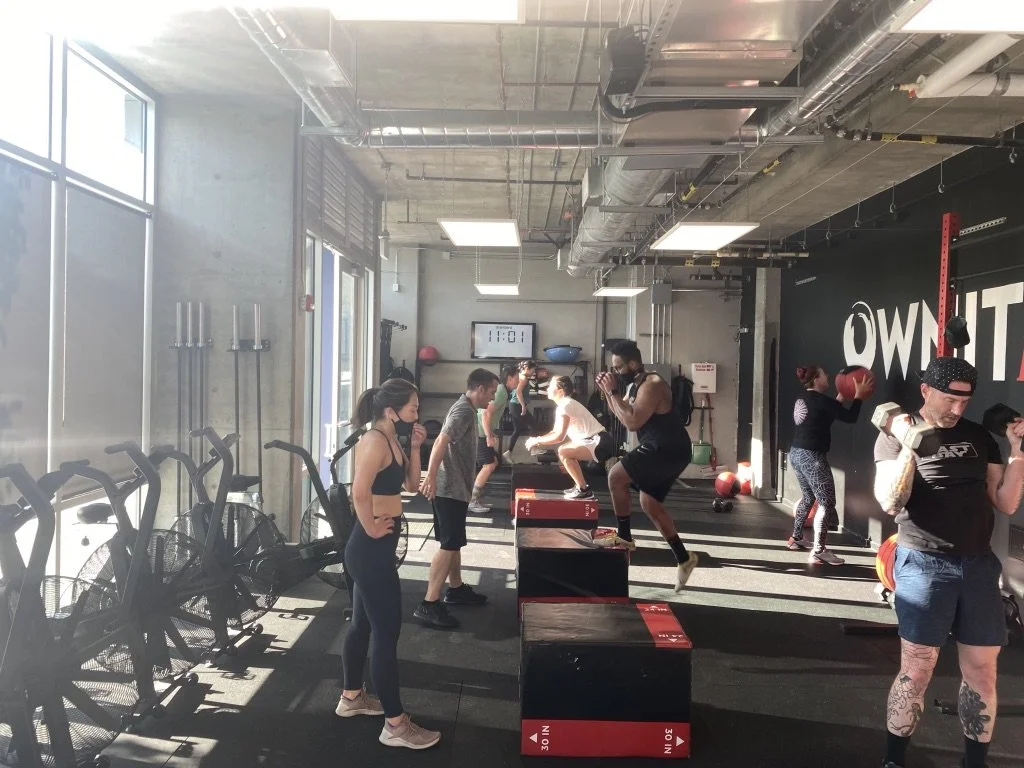Keep it real
We’ve been talking about it for the month of January and it’s finally here. Our Keep it Real program is here.
What is Keep it Real February? A month of challenges or objectives which have been proven to lead to a healthier life.
Why would you want a healthier life?
I am a firm believer that the human body is a vessel to experience this beautiful thing called life. The better the vessel, the better the experience in my opinion. A great example of this would be the ability to perform an activity you enjoy without pain or distress due to poor health or lack of vitality. Another great example would be the ability to be with your family or community for as long as possible without being a burden to them for as long as you possibly can.
Here is the part where we have to Keep It Real with ourselves. We ALL know, there are some things that are inherent to great health. Enough or proper sleep, eating non-processed food , adequate movement & recovery.
The list of what constitutes great health is long filled with dogma, snake-oil etc . We’re about what works. So let’s Keep it Real for 28 days and see what happens.
Ps. None of this “easy” but ``We Can do Hard Things.”
What is unprocessed/minimally processed food?
Foods that are in their natural state are considered unprocessed. Foods like apples or carrots are unprocessed. They are fresh out of the ground and just the way nature intended. According to the Academy of Nutrition and Dietetics, processed foods include anything that has been cooked, canned, frozen, packaged or changed in any way from its natural state.
Why is it important to only consume minimally processed foods? Food processing removes nutrients and adds ingredients such as preservatives, flavorings, colorings, and other chemicals in addition to being a major source of excess sugars. This means that anytime you cook, bake, or prepare the food in any way, you're processing it.
Now we wholeheartedly acknowledge that it would be difficult to stick to a diet that consists purely of unprocessed foods and let's face it you may get tired of eating cold vegetables. That’s why we are recommending minimally processed foods in addition to non-processed foods. Note, that minimally processed foods don't have added ingredients. They are just altered in other ways, such as through cooking, freezing or removing inedible or unwanted parts--think steaks, chicken and fish. Some other examples of minimally processed foods include frozen fruit and vegetables, bagged and pre-washed spinach, cooked salmon or roasted nuts.
Week #1: Sleep:
Objective #1:
Strive for 7-8 hours of sleep every night. The more the better!
Why
Get to bed 30-45 Minutes earlier than your usual bedtime.
Limit consumption of stimulants (coffee, cocaine, caffeinated beverage) no later than 12pm.
Avoid eating a large meal 2-3 hours prior to bed.
Sleep in a cool dark room. The darker the better!!!
Avoid blue or bright lights later in the night.
Get sunshine to hit your eyes first thing in the morning.
Week #2: Nutrition
Objective #1:
Strive to eat non-processed food.
Why
Avoid food “products” and consume REAL food. Anything made with flour, high fructose corn syrup, wheat & added sugar. (you won’t die, I promise.)
Consume meat, veggies, tubers, fruit and non seed oil based fats.
Eat more colors from fruits and veggies.
Eat until satiated.
OBJECTIVE #2
Eat adequate protein
Why
Consume protein with every meal. A good measure would be a fist size serving of protein per meal.
Find out how much protein you need for your body weight and goals. Another good measure would be 1 gram of protein per pound of body weight for men and 0.5 - 0.75 grams protein for women. Some individuals might need more or some a little less. Play with the numbers until you feel you recover from intense efforts with 24 48 hours consistently.
OBJECTIVE #3
Drink more water with pinch of salt.
Why
Have several water bottles preferably glass or stainless steel.
Place your water bottles where they are easily accessible. For example one for your office, one for the gym or general carry, one in your car. The excuse of not having your water bottle readily available should not exist.
Add a pinch of salt or some other form of electrolytes to your water. Adding salt or electrolytes to your water aids in hydration and recovery.
Drink until hydrated. How do you know if you’re hydrated? Urine color is a decent enough indicator. Clear or light colored indicates you’re sufficiently hydrated. Dark urine or barely urine indicates you need some more water. If your urine is really dark “ coffee colored” go see a doctor.
Week #3: Movement
bjective #1:
Movement is an essential part of a healthy life. The use or lose principle really applies to movement. The more you move the longer you’ll retain fundamental movement patterns.
Why
Strive for 7 days of movement weekly.
4-5 “ gym “ sessions per week focusing on foundational movements like squats, carries, hinges, presses and interval & higher intensity based workouts.
2-3 movement based sessions. Yoga, walking, hiking, stretching, low intensity “cardio”.
Week #4: Recovery:
objective #1:
Find a recovery modality that works for you, your schedule and budget. This is by no means an exhaustive list but are some time tested options.
Why
Yoga - virtual or in person.
Foam rolling and stretching.
Low intensity cardio sessions.
Massage and Bodywork.
Cold Showers and Wim Hof or other breathing techniques.
objective #1:
Perform one recovery based workout.
Why
One of your weekly sessions should consist of 60- 90 mins of low intensity cardio session, preferably on a machine rower, bike, assault bike, elliptical machine etc.

